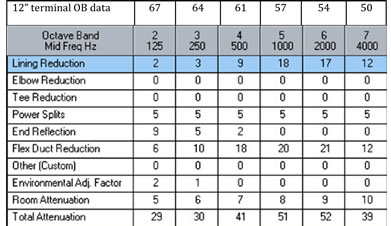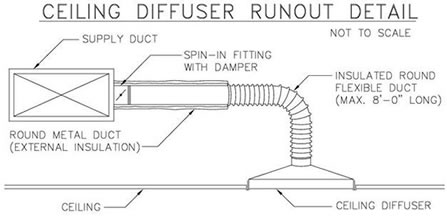It doesn’t have to be expensive – you just have to know the data…
The challenge: Design the conference room for NC20 with 1500 cfm and a 12” terminal box.
If you go to the Price terminal box page, at 1500 cfm, a 12” terminal box will provide a discharge NC of 26 (at ∆1.0” WG). Before you decide to go to the 14” terminal, consider how that NC26 is derived. (This information pulled from Price All-In-One software.)

The NC24 listing for that terminal box at that performance is based on specific assumptions. Those assumptions create the testing criteria for ARI test 885-98. Note that the largest impact on sound at the room level is the flex duct reduction. If the application is hard ducted without a liner, get rid if the lining reduction and the flex duct reduction.

Another item to consider is if the flexible duct used meets, exceeds, or falls short of the assumption the ARI test makes.
Now consider a new flexible duct product Air Flow is offering from Flexmaster. Check out these insertion losses. Data gathered from Energistics Laboratory.


Whether 500 fpm or 1000 fpm data is used, the minimum insertion loss IMPROVEMENT (per dB) is:
![]()
Those numbers would be pretty impressive for a duct silencer, let alone a 6’ length of flexible duct with NO ADDITIONAL PRESSURE DROP. And by the way, the improvement in acoustics from changing the flex would get the room down to NC20. The model number for this flex is 6M. It’s more expensive than the typical flex, but look at what it can do!
On another front, if you need to design to specific NC levels, the folks at Air Flow, Price, and Flexmaster can help you get to your client’s goals.
Reach your sales person or Tom Gelin at tom@airflowinc.biz or 414-351-7744.
Sincerely,
Tom Gelin



